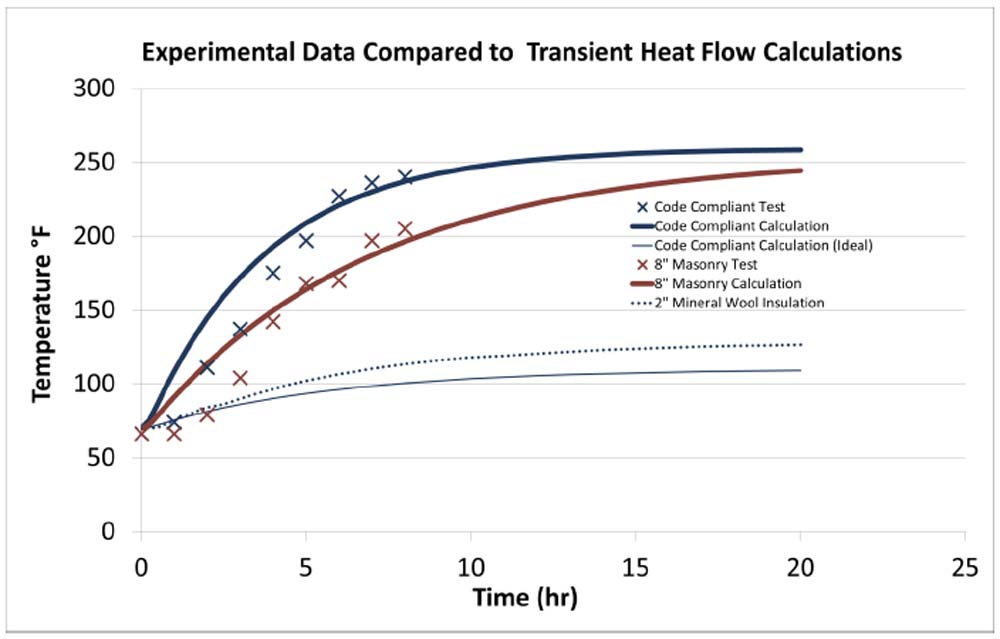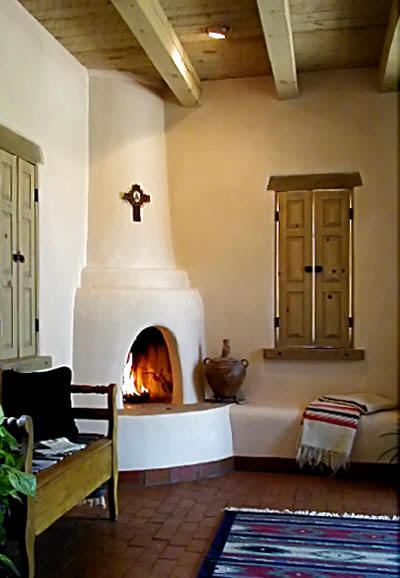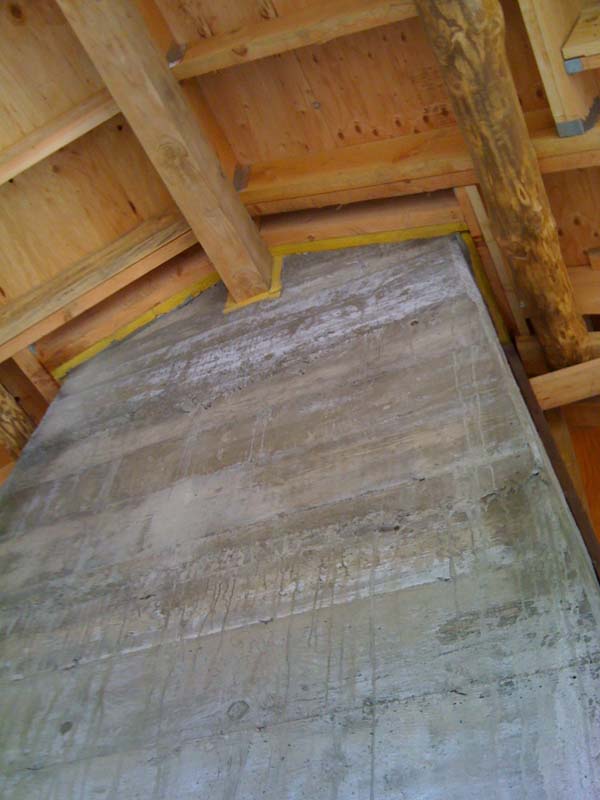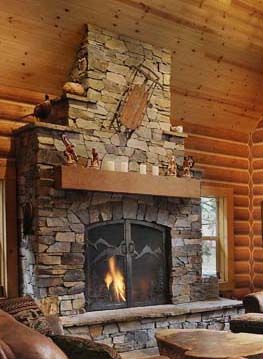The Air Space
Around a Chimney - Not What you Think
by Jim Buckley
3/24/13
|
Code has long required a 2" air space between the outside of a masonry chimney and any combustible material. And that air space "shall not be filled, except to provide fire blocking", reads the current International Residential Code (IRC)*.
|
For years code officials, builders and masons have argued about what that means. Can you use brick or insulation as fire blocking? "No", said the purists who correctly pointed out that any insulation - certainly brick - conducts heat better than air. Air is almost the perfect insulator and you can't fill that space with anything. |

Full Test Report
|
Now it turns out that the argument was over the wrong issue. The heat transfer through the air space is not by conduction but by convection. In the real world you can't expect the air in an open air space to stay in a nice calm insulating blanket. It flows and mixes and transfers heat, not conduction, but by convection. We performed some experimental tests to back up another code change proposal. Our tests were designed to show that an 8" thick masonry chimney wall in contact with combustible material is at least as safe as the code-compliant 4" thick masonry chimney wall plus 2" of air space. The 8" thick wall was at least as safe mostly because of the tremendous thermal capacity of masonry. The engineer, Andrew Klein, then added some theoretical calculations to verify the experimental data. And that led to a great surprise. The theoretical heat flow calculations matched the experimental data IF you assumed convection in the air space. Andrew threw in an "ideal" calculation in which convection was not assumed and the heat transferred through the air space only by conduction. "Ideal" because it doesn't actually happen. But, if you could make the air in the air space keep still, the heat transfer through the space would be negligible - bottom curve in the graph above.
|
So how can we keep the air in the air space still? Let's fill that air space with insulation. The insulation would trap the air and keep it from moving. Yes, the insulation conducts heat better than air (if you could keep the air from moving) but the insulation prevents convection and so is almost as good as the unattainable static air in the air space - the dotted next lowest curve. And, by the way, much better than an open air space, currently required by code, where the heat is transferred by convection. The theory needs to be verified by experiment but finally the old argument about whether or not to fill the 2" space around a chimney with insulation may be resolved. Filling that space with insulation that prevents convection reduces the heat transfer through the 2" space much more effectively than leaving the 2" space open. An air space may be what you think it is but how heat is transferred through the air space is now a lot more clear. Heat is transferred through an open air space by convection - not by conduction.
|
2012 IBC Code Change Testimony
2013 IRC Code Change Proposal
Full Test Report
Masonry Chimney Clearances

Codes
Buckley Rumford Fireplaces
Copyright 1995 - 2014 Jim Buckley
All rights reserved.
webmaster


